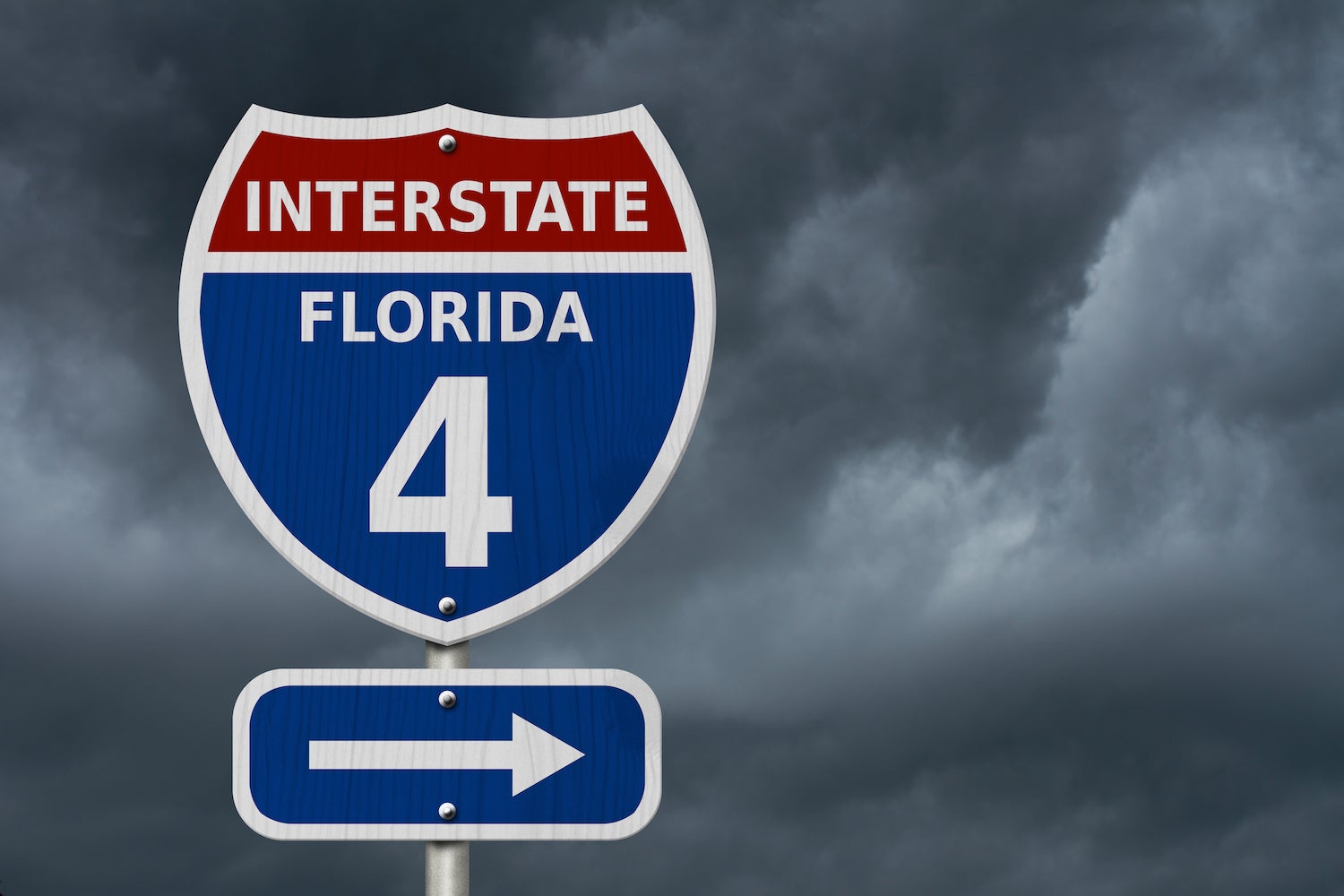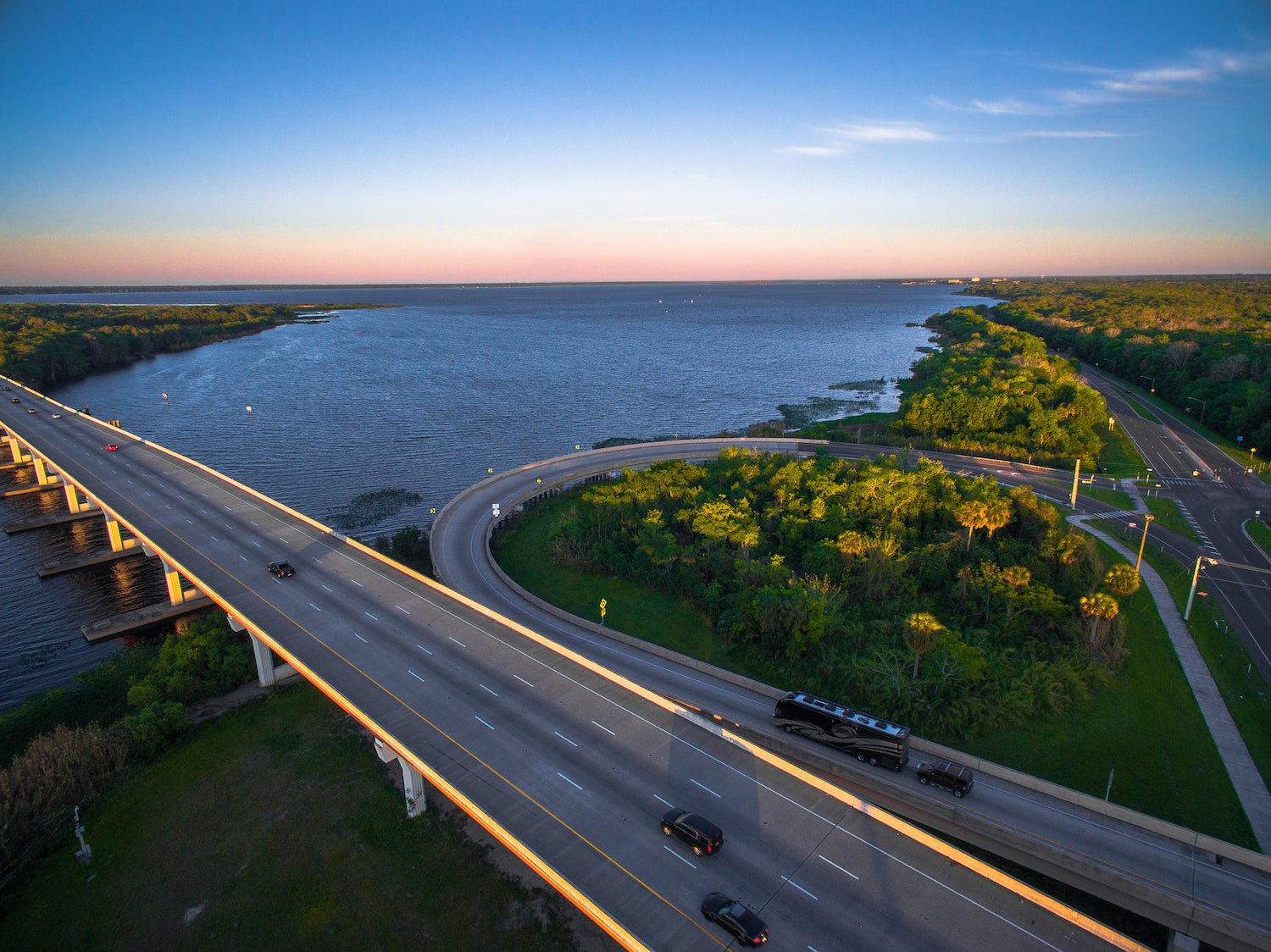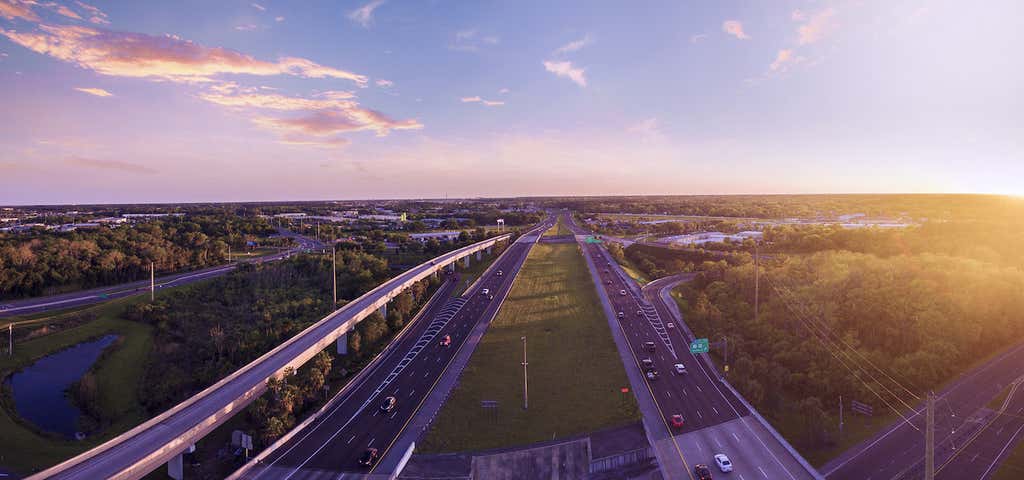Unfortunately, this bit of transportation infrastructure has a bit of a dubious past. You see, it was built on the site of the Swedish settlement. After the Yellow Fever epidemic, all that remained of the pioneering site was an abandoned farmhouse and several family graves (of those who perished during the epidemic). Did that halt construction of the I-4? Nope.

1
Tampa
But, some spooky things began to occur around the middle of the 20th century, mostly around the main highway that connects Tampa with Daytona. You've probably driven Interstate-4 if you've traveled around Central Florida.
Via I-4 E, Orlando, FL
The port city of Sanford, Florida was established in 1877. Today, Sanford features a bustling downtown with antique shops, art galleries, a zoo, a farmers market every Saturday, and even a Soapbox Derby. However, the history of this Central Floridian city is actually quite less cosmopolitan. The original inhabitants were the Mayaca (AKA Jojoro) native American tribe, who were all but decimated upon contact with Europeans, by war and disease. After Florida became an official U.S. state, following the Seminole Wars, many Swedish indentured servants were brought to the area. It was these Swedes who did virtually all of the hard labor to settle the land and grow the area into becoming the world's leading producer of oranges. About ten years after the colony was established a horrifying fire broke out that destroyed much of the settlement. This was followed by a terrible epidemic of Yellow Fever and an historic freeze that ruined the area's citrus industry at the time.
However, Sanford rebounded at the turn of the century, and while industry grew, the population increased and the community settled into a new, prosperous era of contentment.
Sanford


Way back in the late 1800s when the Department of Agriculture along with the Governor of Florida established the ‘Florida Land and Colonization Company', its puprose was to populate the state with workers. This is how the tiny colony of Swedes came to settle the area initially. It was called Saint Joseph’s Colony, and it was a religious settlement led by Father Felix Prosper Swembergh. However, when Father Swembergh was sent to Tampa he contracted Yellow Fever and died. Soon after the families of St. Joseph's Colony also contracted the disease: "As Father Swembergh was dead, there was no one to give the last rites to the stricken, and the four victims were quickly buried without any formal ceremony. No family gatherings and no absolution." (According to PSI Researcher.)
With no colonists left to tend the land, it was soon absorbed by Lake Monroe township:
"...[B]y the early 1900s, a farmer by the name of Al Hawkins, his wife and family bought a large portion of the colony’s land. Quickly, the farmer started clearing the now overgrown fields of the old colony for orange groves and celery fields. While clearing the dead center of the field, the farmer found four small graves, evident by four small rotting wood crosses, eerily reaching out of the tall weeds and thickets. Weathered and falling apart, the wooden markers meant honor to the farmer, and respectfully decided to do his farming around the graves instead of plowing over them. “The Field of the Dead” as it became known, remained in its peaceful spot for years, until the farmer died in 1939." (PSI Researcher)


7
Daytona Beach
Then in the 1950s a super highway was proposed that would cut through the area. The farmer's widow was convinced by Walt Disney's promise of bringing new life to the area with his construction of Walt Disney World. So, she sold the land and the construction of Interstate 4 began. The land surveyors made the executive decision that the graves were so old that they "felt it was best, as well as beneficial to construction and time issues to ignore the graves and build over them." In fact, one engineer is reported to have said "“It’s not an ancient Indian burial ground, they’re just a few old bones:"
According to the legend, the very day the road engineers began plowing over the graves, filling them with dirt in order to elevate the land for construction, one of Florida’s most deadly Hurricanes crossed the state. A name that may still strike fear into the minds of those who survived it, Hurricane Donna caused millions of dollars in damage to many areas of central Florida, and was responsible for many lives lost, not to mention the disruption of further road construction for several months afterwards. Some believe that when the surveyors disrupted the graves, a bad omen took place; the hurricane and the curse of I-4 had begun. (PSI Researcher)
Today, there are rumors and legends of "pioneer ghosts standing by the busy highway at night, ghostly voices coming over radios, CBs and cell phones and radio stations going dead while crossing the grave site..." It's been referred to as the "Dead Zone," and it's believed to be one of the most haunted highways in America. The weirdness begins at the southern side of the bridge as it crosses over St. Johns River, just west of modern-day Sanford, for about a quarter of a mile".
According to News 13:
"The actual grave site is said to be underneath I-4, in one of the eastbound lanes just before the south end of the St. Johns River Bridge. [Charlie] Carlson [author of Weird Florida] claims that between 1995 and 1997, there were 44 crashes that injured 65 people on this stretch of I-4. Add those numbers together, and you get 109 — the exact age of the graves as of 1996. Coincidence? While the verdict is still out whether the spirits of disturbed graves have caused several bad accidents on I-4, another rumor is that the spirit energy causes electronic equipment to malfunction and your cell phone to lose reception."

Roadtrippers
Roadtrippers helps you find the most epic destinations and detours—from roadside attractions to natural wonders and beyond.




